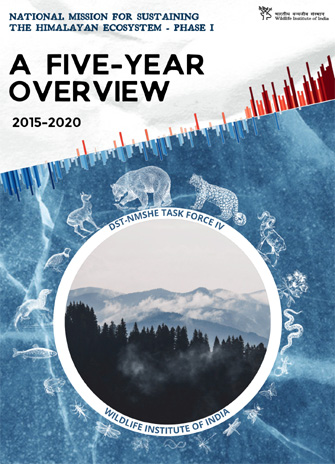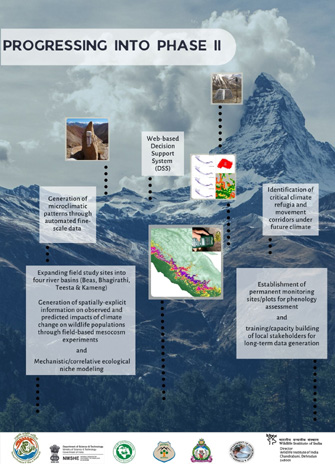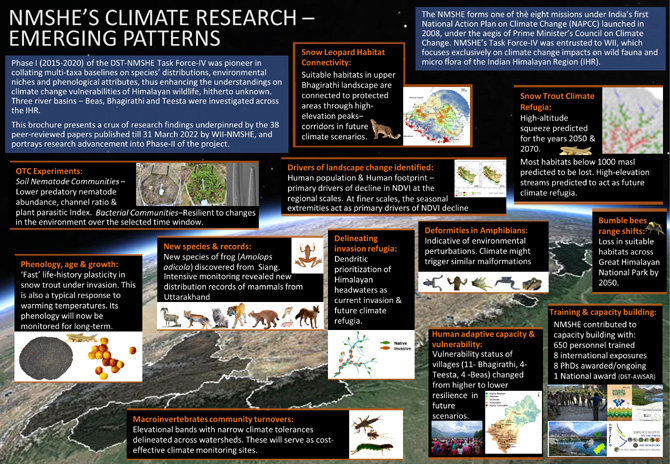Phase-I : Outputs
| Major steps were taken under Task Force 4: Micro Flora and Fauna and Wildlife and Animal Population to expedite our current understanding on the impacts of climate change and to address gaps in regular data.
An overarching database was created encompassing all the publications (5042) on varied taxa in Himalaya till date. Further, over 200 climate data-loggers were deployed for long-term, fine-scale climate data generation in three Himalayan states viz. Himachal Pradesh, Uttarakhand and Sikkim. Innovative technologies such as: Open Top Chamber (OTC) based long-term experimental setups were also established for charting of long-term spatial and temporal trends in activity patterns of the soil microbial and microfaunal communities. Phase-I initiated the regular long-term monitoring of terrestrial and aquatic fauna, apart from the geospatial database creation and assessment of human vulnerabilities to climate change. The data on diversity, abundance and distribution patterns of different faunal groups have been generated based on intensive camera trapping and taxa-specific sampling techniques in unexplored and inaccessible areas of the selected Himalayan states. A Landscape Ecology and Visualization Laboratory (LEVL) was established as a part of NMSHE Programme which provides easy access to data generated on different geospatial aspects in the Indian Himalayan Region (IHR) both within and outside the Wildlife Institute of India. The NMSHE Phase-I also developed spatially-explicit predictions for climate habitat suitability in current and future environments for selected indicator icthyofauna (snow trout and brown trout), mammals (musk deer and blue sheep) and herpetofauna (Himalayan pit viper). The errors and uncertainties in different modeling techniques were calibrated by building multi-model ensemble. |
|
 |
 |
 |
|
Plug-in: Download Adobe Acrobat Reader |
|
Last Updated: October 21, 2022


 (2.56 mb)
(2.56 mb)






